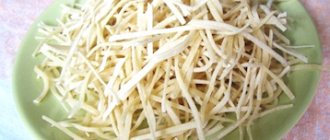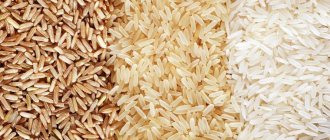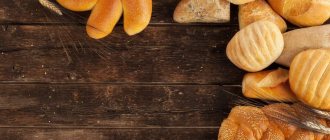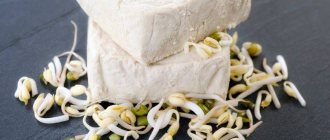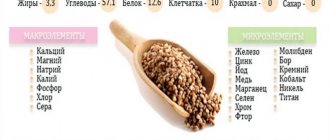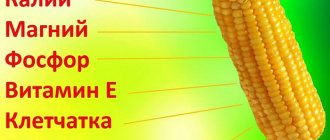Healthy eating means eating not only tasty and satisfying foods, but also healthy foods. Peas fully meet these requirements. This culture contains a number of elements valuable to the body, which determine its beneficial properties. Peas are recommended for all categories of people, especially useful for pregnant women. Despite its relatively high calorie content, it is widely used in dietary nutrition. There are also a number of contraindications in which the use of the culture is prohibited or limited.
Nutritional and energy value, composition
Content of nutrients in fresh green peas (BJU per 100 g of product):
- Proteins - 5.4 g;
- Fats - 0.4 g;
- Carbohydrates - 14.5 g.
The energy value of the product is 81 kcal (339 kJ).
Depending on the category of peas, the energy and nutritional value can vary:
| Type of peas | Calorie content (calorie content per 100 g) | BZHU content (grams per 100 g) |
| Dry (dried) | 297 | 20,4/2/53,4 |
| Boiled in water | 59,8 | 5,9/0/9,1 |
| Boiled in puree | 35,4 | 2,15/0,19/6,8 |
| Canned | 55,7 | 3,58/0,13/9,9 |
| Fried | 170 | 5,1/13/8,4 |
The culture includes a number of vitamins, each of which is important for the health and full development of the human body:
| Vitamin | Contents per 100 g of product |
| A (retinol) | 38 mcg |
| β-carotene | 449 mcg |
| B1 (thiamine) | 0.3 mg |
| B2 (riboflavin) | 0.1 mg |
| B3 (niacin) | 2.1 mg |
| B5 (pantothenic acid) | 0.1 mg |
| B6 (pyridoxine) | 0.2 mg |
| B9 (folacin) | 65 mcg |
| C (ascorbic acid) | 40 mg |
The product is also rich in minerals and trace elements necessary to maintain health:
| Element | Content (mg per 100 g of product) |
| Calcium | 25 |
| Iron | 1,5 |
| Magnesium | 33 |
| Phosphorus | 108 |
| Potassium | 244 |
| Zinc | 1,2 |
Due to its high protein content, peas are consumed by some categories of people as an alternative to meat, for example, vegetarians or believers during fasting.
Brain varieties of the plant are considered more tasty than table varieties. This is due to the increased content of starch and sugars. However, as brain peas ripen, the level of sugars in brain peas decreases.
Beneficial features
The rich chemical composition determines the following beneficial properties of the product:
- removing excess fluid from the body, relieving swelling;
- combating the consequences of anemia;
- elimination of constipation, normalization of the functioning of the gastrointestinal tract;
- treatment of eczema and other skin diseases;
- lowering blood cholesterol levels;
- eliminating the risk of developing iodine deficiency in the fetus;
- prevention of asthma, elimination of complications during attacks;
- assistance in the treatment of oncology, tuberculosis;
- restoration of visual acuity, relieving eye fatigue;
- eliminating heartburn.
For men
Peas have a positive effect on the prostate. In turn, this has a beneficial effect on the functioning of the entire genitourinary system. Consumption of the culture can increase potency and stimulate sexual activity. Due to folic acid, it is possible to increase the number and quality of sperm.
Due to its nutritional value and satiety, the product is recommended for strength sports and heavy physical work.
Peas stimulate muscle function and accelerate the growth of muscle mass.
For women
One of the most important components of the product for women is folic acid. This element slows down the aging process of the body and is responsible for the normal condition and functioning of female organs.
Peas have a positive effect on the condition of the skin. This effect can be achieved through comprehensive cleansing of the body and solving various skin problems.
The product is able to saturate the body with vital hemoglobin. This is especially important during the menstrual cycle, when the content of this substance in the blood drops to critical levels.
Peas contain a large amount of vitamins, proteins and amino acids, which makes the product almost indispensable for expectant mothers. The culture allows you to normalize blood pressure and lower cholesterol levels.
Other beneficial properties for expectant mothers:
- Vitamin C helps strengthen the body's defenses;
- folic acid can significantly reduce the risk of developing fetal defects during pregnancy;
- Calcium contained in peas is necessary for the formation and strengthening of the baby’s skeletal system, as well as for improving the condition of the mother’s body.
The product helps you fall asleep more firmly and quickly, fights insomnia and sleep disorders, which are often found in pregnant women.
At the same time, peas belong to the category of heavy foods, as a result of which expectant mothers are not recommended to consume them in dry form. The culture must first be soaked in cool water and washed thoroughly - only after that it becomes suitable for consumption.
A few days before giving birth, expectant mothers should stop taking peas. This is due to the fact that the product causes increased gas formation in the intestines. For the same reason, peas are not recommended for consumption throughout the entire period of breastfeeding.
For children
In terms of protein content, peas are comparable to beef, which makes the product an important component of baby nutrition. At the same time, the protein contained in the culture is quickly absorbed by the child’s body.
Another important ingredient is thiamine. This substance has the following positive effects on the child’s body:
- activates the growth of the child;
- increases appetite;
- accelerates the development of the muscular system;
- saturates the body with energy.
Peas contain significant amounts of vitamin C, which helps strengthen the immune system and protect against respiratory diseases.
Pea porridge is especially useful for schoolchildren. Thanks to its use, it is possible to increase concentration, improve memory and vision.
Planting and caring for a plant
Peas are usually planted in areas where cabbage, cucumbers, pumpkins or potatoes previously grew. You should not fertilize the soil just before planting. It is better to apply fertilizer before growing previous crops. In this case, the fruits will be more tender.
Since the crop is characterized by good resistance to cold, it is advisable to sow it in early spring. But not earlier than the second half of April. You need to wait until the soil dries out after winter. In summer, peas can be planted until the tenth of July. However, in this case it is recommended to use early ripening varieties.
Scheme of planting in the ground
Before planting peas, you need to make sure that the soil in which they will be planted is fertile, without excess readily available nitrogen. In addition, the crop needs good lighting. You should select sunny areas that are as protected from the wind as possible.
Before planting, the seeds can be soaked in water (at a temperature of about forty degrees). The furrows for planting should be up to twenty-five centimeters wide. How wide the space between the rows should be depends on the height of the plant (a description of the specific variety can be found on the package with the seeds).
Compost is first applied to the furrow, after which the seeds are sown (at a distance of about five centimeters from each other). Planting depth is up to five centimeters. After placing the seeds, the furrows are backfilled.
Supports
Caring for the plant is easy. It is enough to carry out regular watering, weeding and timely construction of supports. The culture is resistant to cold, but does not tolerate significant increases in temperature. Therefore, in the hot season, it is recommended to water abundantly (the amount of water is up to ten liters per square meter).
Peas are a tall herbaceous plant. For its normal development, it is necessary to take care of the supports. Near the planted plants, pegs should be driven into the ground, at a distance of about a meter from each other. Next, stretch the mesh between them. This design will be an excellent support for plant shoots.
The plant bears fruit for a long time, in some cases up to forty days. This feature allows you to harvest over a long period of time.
If you need to collect mature beans, you should wait until the lower pods on the bush are completely ripe, and only then harvest. The collected seeds can be used as material to replant peas in the future. However, it must be taken into account that their germination lasts only two years.
Rules for use and use in diets
In terms of its energy value, peas do not belong to the category of low-calorie products. Despite this, it has a number of beneficial properties that are important for people who are struggling with excess weight:
- cleanses the body of excess fluid, thereby reducing body volume and eliminating cellulite;
- does not accumulate in the body in the form of fat deposits;
- strengthens the muscle frame;
- removes waste and toxins.
The simplest way to lose weight is to soak dry peas in cold water for 12 hours and then grind them in a meat grinder. The resulting mass is consumed in several tablespoons throughout the day. The treatment course lasts 1-1.5 weeks. Upon completion, weight will decrease and intestinal functioning will return to normal.
When using the culture for dietary purposes, you should completely refrain from consuming salt and sugar.
The permissible intake of fresh peas is 200 g per day. The boiled product as part of various salads, cereals, etc. is not recommended to consume more than 100 g per day.
Recipes for dishes with peas
You can prepare various dishes from peas, simple ones that do not require the use of several technologies, and restaurant dishes with an exquisite taste.
You can familiarize yourself with the following methods of preparing peas in the recipes offered in the article:
- Pea porridge with stew
. You should prepare in advance 2/3 cup of peas, preferably crushed, an onion, carrots and a can of stew - 250-300 g. The rest of the seasonings and sunflower oil for frying are probably in every housewife's kitchen. The peas are soaked for 6-8 hours, then the water is drained, another is poured in and the beans are boiled until tender with a bay leaf. While the peas are boiling, the vegetables are chopped and sautéed with sunflower oil. Add the stew to the pan with the vegetables, bring to a boil - the liquid should evaporate. At this time, boiled peas are pounded, mixed with vegetables and stew, and added salt if necessary. It should be eaten hot, each serving can be sprinkled with herbs. - Hummus
. This dish resembles the consistency of pea porridge, only with a delicate, delicate taste. Ingredients for hummus: a glass of peas, one lemon, half a glass of sesame seeds, garlic, olive oil. To traditional salt you need to add chili pepper and coriander. The peas are also soaked, boiled until fully cooked, and at this time the paste - tahini - is prepared. In a dry frying pan, brown the sesame seeds, chop them, add lemon juice and ice water, stirring until you get a homogeneous puree-like paste. The finished peas are blended into porridge with a blender, mixed with tahini, and seasonings are added to taste. Before serving, it is advisable to sprinkle with pomegranate seeds or black sesame seeds. - Pea soup with smoked ribs
. The set of ingredients for this dish is the simplest: a glass of dry peas, 300 g of smoked ribs, 1 carrot and onion each, 2-3 potatoes, 2-3 cloves of garlic, seasonings to taste, vegetable oil for frying. The peas are soaked as usual, and the broth is boiled in a 2 liter saucepan based on the smoked ribs. If you like boiled peas, place them together with the meat in boiling water. All vegetables are peeled, carrots and onions are sautéed separately in sunflower oil. After 40-50 minutes of cooking, potatoes, cut into even slices, are placed in a pan with broth, and after another 10 minutes, sautéed vegetables are added. The soup will be ready when the potatoes are completely cooked. 2-3 minutes before turning off, add spices to taste - salt, a mixture of peppers, bay leaf and chopped garlic. Before serving, it is advisable to sprinkle each plate with chopped parsley and dill. - Pea soup for vegans
. Ingredients: split peas, carrots - 2 pieces, onions - 2 pieces, water, vegetable oil and necessary spices. The quantity of products is calculated for 1.5 liters of water. The peas are soaked for 6-8 hours, the water is drained, and the beans are set to cook. The vegetables are sautéed together, then added to almost finished peas and cooked. Spices - to taste. You can also add potatoes, bell peppers, frozen cauliflower or broccoli to the soup. - Dosas
. This very interesting Indian dish is easy to prepare, but the preparatory stage is long. The peas should be soaked for 8 hours, and then the dough should be left to infuse for a day. Ingredients for cooking: basmati rice and dry peas - 100 g each, turmeric, safflower oil, water, salt and pepper. Soak peas for 8 hours, basmati rice for 1 hour. Part of the liquid is drained, leaving a little, mix peas and rice, grind with a blender until mushy. The mixture is left to absorb each other’s juices for 24 hours, then seasonings are added to the mixture and fried, like regular pancakes or pancakes, in safflower oil. The dough is poured into the pan and, after one side is browned, turned over to the other. Sunflower oil will give an Indian dish an almost Slavic taste. - Pea casserole
. This is a dish of traditional Russian cuisine. You should prepare in advance: dried porcini mushrooms - 30 g, a glass of peas - they should be pre-soaked, carrots, melted butter - 60 g, cream 30-32% - 20 g, onions - 2 pieces, eggs - 2 pieces, breadcrumbs. Seasonings: red and black pepper, sea and regular salt. The prepared peas are boiled until tender, the mushrooms are soaked for 20 minutes, the whole onion is boiled for the same amount of time, and cut into large pieces. Peel the carrots and onions, cut the carrots into strips, and cut the onion into half rings (it should be placed in the freezer for 5 minutes). Boiled peas are pounded into puree, adding cream and melted butter - 1/3 of the total amount. Vegetables are sautéed separately. All processed ingredients are combined, eggs and seasonings are added and mixed until completely homogeneous. Preheat the oven to 180 degrees, place parchment in the pan and grease it with oil. Pour in the pea batter, distributing evenly. Bake for 40 minutes. Grease the finished casserole with the remaining melted butter. It will be tastier if each piece is dipped in sour cream before eating. - Pea sausage
. Amount of products needed: dry peas - a glass, water - 2.5 cups, beet juice - 2 tablespoons, garlic - 2 cloves, sunflower oil - 1/3 cup, agar-agar plate, salt - a teaspoon. Seasonings to taste - a mixture of peppers and crushed nutmeg. Dry peas are fried in a dry frying pan until golden brown and ground into flour. To make the mass more homogeneous in the future, it is sifted. Place a pan of water on the fire, as soon as the water boils, pour pea flour into it and cook, stirring constantly so as not to burn. Agar-agar is diluted in cold water and added to the pea mixture 2-3 minutes before turning off. When the pea flour is completely cooked and the mixture thickens, add all the seasonings and add beet juice. Stir until completely homogeneous and pour into the mold. It is very convenient to use a cut small plastic bottle, greased from the inside with oil. The form hardens in the refrigerator in 2-2.5 hours. You can add fried bacon or pieces of lard to the sausage mince for flavor.
Dry peas are never served al dente, that is, slightly raw.
It needs to be cooked until cooked, to the point where it begins to soften. Pea dishes should be introduced into the diet no more than 2 times a week; the serving size should not exceed 150 g for women and 200 g for men of average build, taking into account diseases of the digestive system.
Contraindications
In order not to cause harm to health, you should refrain from eating peas if you have the following diseases and problems with the body:
- individual intolerance to the product, allergic reactions;
- age under 3 years;
- old age (due to a weakened digestive system);
- lactation period;
- nephritis;
- cholecystitis;
- type 1 diabetes;
- thrombophlebitis.
For some diseases, the use of peas is not completely prohibited, but is significantly limited:
- For gout, you can eat boiled peas in small quantities.
- In case of pathologies of the kidneys and liver, the product is allowed to be eaten only in rare cases.
- Dry and boiled peas should be used with caution if there are disturbances in the functioning of the gastrointestinal tract associated with high acidity.
- For pancreatitis, you can eat a certain amount of sprouted peas. It is believed that the product in this form will benefit the patient. At the same time, the patient is prohibited from giving cereals, soups and other pea-based dishes.
During periods of exacerbation of gastritis, peas are prohibited for consumption in any form. During remission, you are allowed to eat a small amount of green peas or sprouted crops.
If you have chronic diseases, it is recommended to first discuss the possibility of consuming peas and products based on them with a qualified specialist.


